|
 |
|
|
Editor's Note: If anything, the experience of 2013 shows more clearly than ever the limits of China's old economic model. The nation's leaders openly acknowledged as much in the resolutions adopted by the recent Third Plenum. The one-sided pursuit of GDP growth is unsustainable, the excessive dependence on growth driven by exports and government investment is unsustainable and the current system of urbanization is also unsustainable. So 2014 should be a year of action to implement the reform plans laid out by the Third Plenum, economists agree. Although it will take time for all of the desired changes to occur within all industries, the real key is the reform of the government's financial leadership and financial services industry. Financial reform is the priority - that's the message China Daily received when it interviewed economists this week. |
|
|
 |
|
|
The major challenge I see this year is the so-called "misallocation of resources". To be more specific, we are seeing a cash-strapped real economy while the shadow-banking sector is taking off really fast. Since the outset of 2013, the credit boom has failed to keep the economic recovery on track, suggesting that the cash sloshing around the economy is not yielding the desired effect of stoking growth and could instead exacerbate property and inflationary risks. This has caused serious consequences. One is that debt-laden local governments are using the money to repay loans instead of it being guided to manufacturing activities that spur growth. Meanwhile, China's manufacturers are reluctant to borrow and step up capital spending due to persistent overcapacity, which could further drag future growth. The second is that shadow banking, which provided a lifeline to the property market, has caused bubbles in a sector that the government is trying to control.
In 2014, the Chinese economy will be exposed to potential turbulence caused by the flow of hot money in and out of the country. The US Federal Reserve is widely expected to scale back its easy money policy at some point next year, which may in the short run cause speculative cash to flow out of China back to the US. But over the long course, my prediction is the Fed will maintain its stimulus program, highlighted by a near-zero interest rate, into at least next year. That said, opportunistic investors will swarm to China and cash in on its most lucrative sectors. Besides, a weak US dollar is being maintained as a "national strategy" as Washington seeks to revitalize manufacturing, benefit exports and boost employment. Domestically, we need to reinvigorate the consuming power of the 1.3 billion people in China in order to steer the growth of the economy. Chinese farmers have limited purchasing power. Middle-class bread-winners do not dare spend money for fear of rising medical costs and housing prices. Meanwhile, high-net-worth people aren't willing to shop inside China, as product and service quality at home lag greatly behind those offered abroad.  The guidelines for further reform are to redirect cash from profit-driven shadow banking to bolster the weakening real economy. Meanwhile, more supervision is needed to oversee and regulate the virtual economy. The guidelines for further reform are to redirect cash from profit-driven shadow banking to bolster the weakening real economy. Meanwhile, more supervision is needed to oversee and regulate the virtual economy. |
|
|
In 2013, the economic growth rate has slowed, but not by much. Growth will naturally keep slowing as the economy gets richer, and the government can't do much to reverse the trend. Rebalancing away from an investment-led model toward a consumption-driven model is a long-term process and is a separate issue from slowing growth. I think the reforms that were announced will help rebalance the economy toward consumption, but over the medium term (for the next decade, at least) investment will remain the most important part of China's development.
|
|
|
The year 2013 has been a very interesting year. The first half of the year was dominated by concerns about economic slowdown in China, falling trade, falling exports and imports, and concerns that Chinese economic growth would not meet this year's target. Since the mid-summer, we have seen a clear indication that China's economic performance has improved. In the short term, I think 2013 will emerge as the year in which China meets its targets, where the fears we had one year ago of a sharp slowdown of the Chinese economy proved to be not well-founded. Another thing I want to emphasize is, of course, looking a little more into the future, a lot depends on the implementation of economic reforms in China. These would be a very important part of the agenda for people's ideas about the future of the Chinese economy if the reform program is carried out energetically.
I think a profound challenge is based on what China can do to develop its domestic economy. Of course the export market is still important. The latest trade figures have shown that they can still make a difference. But I think what is needed for domestic economic growth is, clearly, what I call the "empowerment of the consumer", allowing people to, for example, get better returns on their savings, making sure that wages continue to rise. Of course what is also needed are all the broader economic social reform links to successful urbanization, changes in the system for getting migrant workers and their families in the cities, a lot of important reforms related to social protection and social security, healthcare and so on. 
The first priority from my point of view would be opening up the financial market, making sure that banking and bank accounts give a better return, so I think more flexibility on interest rates is a must. That would be an important measure that China could take in the short term. This could be an area in which we could see some signals that the government is really concerned to make the financial market in China more open. Also essential is the opening-up to bring in more foreign investment with new technology, new expertise, new knowledge into China, particularly, for example, in the area of services, where the Chinese economy is not very strong. It would be another clear signal that China wants to do everything possible to accelerate domestic employment and domestic growth in new areas. |
|
|
How to deepen the reform in a rapid and smooth way will be an internal challenge for the country. Internationally, China's economic growth also partly depends on the economic recovery of the United States and the European Union. China's growth will moderate to around 7.2 percent next year on the premise that the 2014 growth target could be lowered to 7 percent in the final two years of China's 12th Five-Year Plan in order to allow room for structural reforms and address the problem of overcapacity and outdated capacity, especially in heavy industries. The inflationary pressures remain manageable next year. However, non-food inflation, especially rental costs, could pick up amid rising property prices, somewhat putting pressure on the CPI. Property prices in the country's key cities may rise further, but panic purchasing hasn't appeared yet. 
The downside risks have been mitigated after the Party's Third Plenum, but policy execution is also key to ensuring the success of reforms. Key to watch is how to promote the new family planning policy allowing couples to have two children if either of them is an only child and also market-based interest rate reform and foreign exchange reform. In the near term, the authorities will have to address the rising cost of funds and the financial risks embedded in the shadow banking system. |
|
|
Overcapacity was a major issue faced by the Chinese economy in 2013. Although the State Council - the cabinet - and the National Development and Reform Commission have urged many times the tackling of overcapacity, newly added production still outweighed eliminated items. Because of severe overcapacity and sluggish demand at the downstream end, prices and profits have tumbled significantly, with some sectors such as steel and electrolytic aluminum seeing heavy losses. For many years, local governments have been following blind investment and unreasonable resource allocation in the name of gross domestic product pursuit, which is a major reason for the overcapacity. Although many industries are pressing for consolidation and elimination, the government-backed efforts have not generated much efficiency, only heavy debt. Eliminating overcapacity will be a major task for sectors such as coal, steel and cement.
China's macroeconomy has now shifted to a mid-high-speed development phase, where the marginal utility of credit-fueled investment is decreasing. With a periodic and structural downturn in the global economy, as well as a rebalance and policy recalibration, problems in the Chinese economy erupted and were exacerbated amid improper policy fine tuning. The recent Third Plenary Session of the 18th Central Committee of the Communist Party of China has vowed to push forward market-oriented reform and lessen government-led allocation of resources. Such resource allocation has resulted in State-owned enterprises being heavily indebted, which is also an accumulating risk in the Chinese economy.
The Third Plenum has come up with plans to accelerate financial reform, which is expected to improve the allocation of financial resources over the long term. Acceleration in financial reform will direct more financial resources to emerging industries. |
|
|
The biggest challenge from abroad is uncertainties related to export recovery. We expect stronger growth from the United States and European Union, but uncertainties remain in those economies. In addition, the US Fed's tapering of quantitative easing may lead to market volatility in some emerging nations, as well as weakening of their currencies, both of which would have a negative impact on Chinese exports. In the domestic arena, the question of balancing reform with sustaining relatively rapid growth will be a challenge for the government. From a cyclical point of view, the government needs to ensure that the development of shadow banking does not lead to faster-than-designed credit expansion, nor to a sudden unexpected credit squeeze due to tighter regulatory oversight. 
The focus for 2014 will likely be ensuring stable and still relatively fast GDP growth (of more than 7 percent) and pushing forward a series of reforms. In terms of reforms, we believe the government will make notable progress in: 1) a reduction in government approvals of investment projects and businesses; 2) stricter guidelines and improved transparency of public spending; 3) the expansion of pension and healthcare insurance coverage; 4) resource and utility price reforms; and 5) financial reforms. We also expect to see progress in the fiscal area, including an expansion of businessV AT taxreform, a centralization of local spending responsibilities and tougher rules on local government debt expansion. |

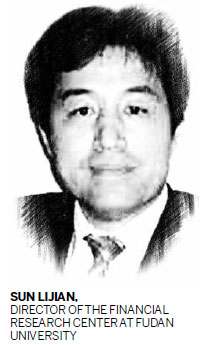

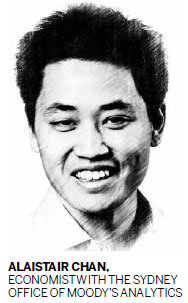


 It's hard to see what the major priority is for reform. I think a continued push for reform by the central government will be useful and will create an overall atmosphere of reform, because if the central government sets high public expectations, then local governments, State enterprises, etcwill be under pressure to follow through.
It's hard to see what the major priority is for reform. I think a continued push for reform by the central government will be useful and will create an overall atmosphere of reform, because if the central government sets high public expectations, then local governments, State enterprises, etcwill be under pressure to follow through.


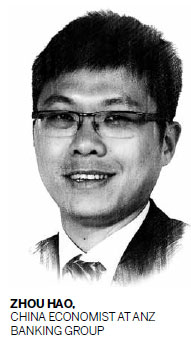
 The limit-management framework setting the bottom line for GDP growth and the ceiling for the Consumer Price Index, I believe, is a highlight for China's economy in 2013. Moreover, when the economic growth rate saw an obvious slowdown in the second quarter, the government didn't make much of an intervention, showing its determination for quality growth.
The limit-management framework setting the bottom line for GDP growth and the ceiling for the Consumer Price Index, I believe, is a highlight for China's economy in 2013. Moreover, when the economic growth rate saw an obvious slowdown in the second quarter, the government didn't make much of an intervention, showing its determination for quality growth.
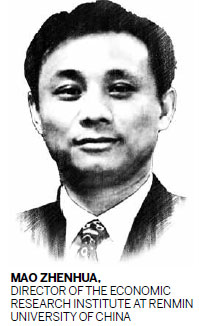


 China will follow a neutral, slightly tight monetary policy, but cross-border capital flows will be more frequent, adding a direct impact on the
China will follow a neutral, slightly tight monetary policy, but cross-border capital flows will be more frequent, adding a direct impact on the 
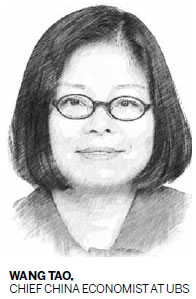 China's economic growth will likely stabilize at 7.6 percent to 7.7 percent in 2013. The government has supported the economy with strong
China's economic growth will likely stabilize at 7.6 percent to 7.7 percent in 2013. The government has supported the economy with strong 